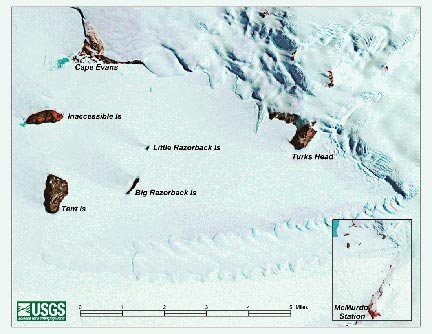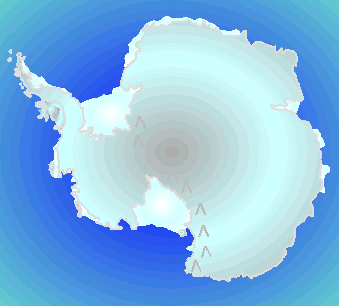
My name is Susy Ellison. I teach grades 9-12 at Yampah Mountain High School
(YMHS), a public alternative high school in Glenwood Springs, Colorado. I am
primarily a science teacher but also teach classes in other subject areas. YMHS
is small, with approximately 120 students enrolled in 3 different programs. Our
mission is to provide relevant educational opportunities that create an
enthusiasm for learning. My science classes focus on specific issues or topics,
and incorporate hands-on learning techniques to gather and interpret
information. Past classes have covered a diverse range of topics, from energy
conservation and energy-efficient building techniques (culminating in the
construction of a 500 square foot strawbale classroom building) to winter
ecology (with a week-long trip to Yellowstone National park in February to
cross-country ski and explore the winter ecosystem).
I come to the teaching profession via a many-branched pathway. My background is
in wildlife biology. I've managed to build on that knowledge base by including
research experiences in both Alaska and Finland (at equivalent latitudes and
opposing longitudes), stints with the National Park Service, Bureau of Land
Management, and US Forest Service in Utah and Colorado, teaching environmental
education for grades K-4, running a science center, and teaching fifth grade.
Somewhere in the midst of all this I went back to school for my teaching
credential in secondary science and, later, for a masters degree program in
which I focused on environmental literacy.
I live with my husband Marty near the town of Carbondale, Colorado in a house
that we designed and built ourselves. He owns his own business, designing and
building custom furniture. Filling free time is never a problem. Summer
vacation flies by with travel, hiking, biking, and kayaking. Winter is for
skiing-both Nordic and downhill. My more sedentary interests include reading,
sewing, and knitting. I also find time to squeeze in work with a local
environmental organization that focuses on local forest and wilderness issues.
My parcticipation in TEA represents a lifetime of fascination with arctic and
antarctic environments. As a teacher, I feel that this experience will provide
me with an incredible knowledge base to share with students and colleagues. As
an environmental educator and activist I view Antarctica as our
planet's "canary''; an environment most sensitive to global change. As a
scientist and science teacher, Antarctica presents itself to me as the ultimate
laboratory; a place to examine life under the harshest of conditions. We teach
best what we know and feel. Passion plays a strong part in creating an
educational climate where learning and growth can occur. I think that I enjoy
learning as much as I enjoy helping others to learn. This experience will
fulfill my dreams while providing me with the information and inspiration I
need to help others create theirs.

PATTERNS AND PROCESSES: DYNAMICS OF THE EREBUS BAY WEDDELL SEAL POPULATION
Dr. Robert A. Garrott and Dr. Jay Rotella
Montana State University
Bozeman, MT
Dr. Donald Siniff
University of Minnesota
Saint Paul, MN
From early October through mid-December I will be calling a cluster of 4 plywood fish huts .home, sweet, home.. What will make these huts unique is
their location.on the ice of Erebus Bay, at the base of Razorback Island. I will be working with a group of researchers studying the Weddell Seals
(Leptonychotes weddellii) that live in this bay, and use its ice cracks for access to the ice surface. The Erebus Bay Weddell Seal Population Study in
eastern McMurdo Sound, Antarctica was initiated in 1968 and represents one of the longest intensive field investigations of a long-lived mammal in
existence. This year the project will focus on two areas; a continuation of the ongoing demographic studies of seals and pups, and the development and
testing of techniques for studying the mass dynamics of the population.
DEMOGRAPHICS
Demographics studies attempt to collect data that will help researchers answer questions about the composition of populations; size, male/female ratios,
numbers of babies born, and survival rates. Over the 34-year period of this study a total of 16,117 animals have been tagged with 153,595 resighting
records logged in the current database. As such, this study is an extremely valuable resource for understanding population dynamics of not only Weddell
seals, but also other species of both terrestrial and marine mammals with similar life-history characteristics.
The seals begin to pup in early October, with most pups born by mid-November. During the pupping season we will be out on the ice surveying the seal
colonies, assigning numbers and attaching tags to flippers of each new pup. Once the pupping season is over, we will shift gears and work to census the
colonies that are scattered across the bay. We will conduct multiple surveys of each colony, noting marked animals and applying tags to any that are
tagless. The information collected from these surveys will be added to the database and analyzed as a part of this ongoing mark and recapture study.
As this database increases each year, researchers are able to perform increasingly complex analyses that provide insight into the population dynamics of
the individual colonies and the overall seal population.
MASS DYNAMICS
By studying an animal.s mass, scientists can collect data that will help them understand the relationship between weight and the stability of the
population. The greatest single mechanism driving Weddell population dynamics may be resource availability. However, the resources on which adult
Weddell seals depend are located hundreds of meters below the ice covered ocean surface and are therefore unavailable for direct measurement. As an
alternative, a sample of weights from individual animals may be used as an indicator of resource availability.
That being said, the question becomes .How do you handle an animal that might weigh up to 500kg?' In the past, seals have been weighed using a scale
mounted on a sled dragged behind a snowmobile. Needless to say, the process of wrestling a non-compliant object weighing from 300 to 500 kg onto a
weighing sled is certainly an unforgettable experience for both weigher and weighee. In addition, it has been difficult to obtain a database of seal
mass that is large enough for scientific analysis.
This project will be combining digital photography with a software analysis program that will enable researchers to develop a relationship between seal
surface area and their mass. Seals will be photographed from overhead using a boom-mounted digital camera. These photos will be analyzed using a
software program originally designed for measuring the size of bacterial colonies; the seal.s fusiform shape (imagine a cigar with flippers) lends
itself well to determining the surface area. There will still be a bit of seal rodeo involved as data is collected this field season to create the
correlation between the digital images, surface area, and mass of the seals. However, once enough data is collected, the photogrammetric correlations
will provide a simpler and far less invasive means for determining seal mass.
THE BIG PICTURE
Why study seals? Besides the obvious answer.to learn more about seal biology.conducting a long-term study of a large mammal population can provide
scientists with a greater understanding of the long-term dynamics of those types of populations. In addition, the seals can be seen as a tool for
studying things that are much more difficult to measure. Mass and population dynamics studies will give insight into variations in the seals. food
base. Those insights may, in turn, be applied to long-term studies of global climate change and its impacts on that food base.

image courtesy of: Gillian Hadley

image courtesy of: Gillian Hadley

 Be sure to check out the images in the journal entries!
Be sure to check out the images in the journal entries!
